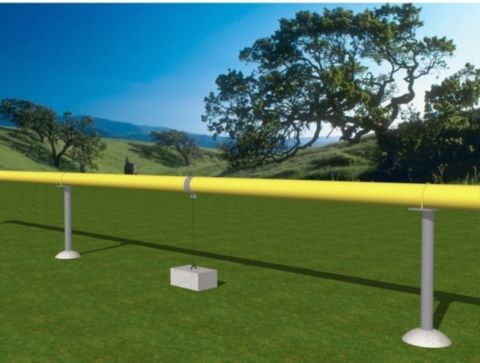Professor of the SUSU Department of Building Technologies and Structural Engineering Aleksandr Potapov has patented a device for damping resonant oscillations in pipelines, in particular, in overhead gas pipelines.
The idea came to Professor Aleksandr Potapov when he was conducting official research work commissioned by ZAO Uralgazstroy, studying the aerodynamic stability of the Kuznetskoye-Bayramgulovo overhead high-pressure gas pipeline in the Argayashsky District, on a section of the route near the village of Bayramgulovo.
The thing is that resonant oscillations (that is the swaying of a structure across the flow at a certain wind speed) create particular danger to gas pipelines.
“Vortices alternately break off from the upper and lower surfaces of a gas pipeline, swaying it in the vertical plane. If the frequency of wind gusts coalesces with the frequency of the natural oscillations of the structure, there emerges a risk of resonance, like when swinging on a swing,” explained Professor Aleksandr Potapov. “As a result, due to wind oscillations, the gas pipeline pipe can be seriously damaged, for example, cracks can appear, fastening elements (clamps) in the supporting parts can be destroyed, in some cases the pipe can be thrown off the supports.”
Together with his colleagues, Professor Potapov proposed a method for damping oscillations using a device in the form of a one-way connection: between the supports of a gas pipeline, the pipe is connected by a flexible cable to a concrete block located on the ground.
“As a result, the aerodynamic problem becomes structurally nonlinear,” said Professor Aleksandr Potapov. “The process of oscillation suppression occurs in each oscillation cycle, therefore the amplitudes of the vibration displacements of the pipeline pipe experience constant limitations during resonance.”
In order to ensure that vibration displacements do not exceed the maximum permissible values, the optimal spacing of these vibration damping devices along the route of an overhead gas pipeline is determined using calculations based on mathematical models and computer simulation. On average, for a pipe diameter of 100 to 250 mm, the number of vibration damping devices is 5-7 devices per kilometre of the route of an overhead gas pipeline.




